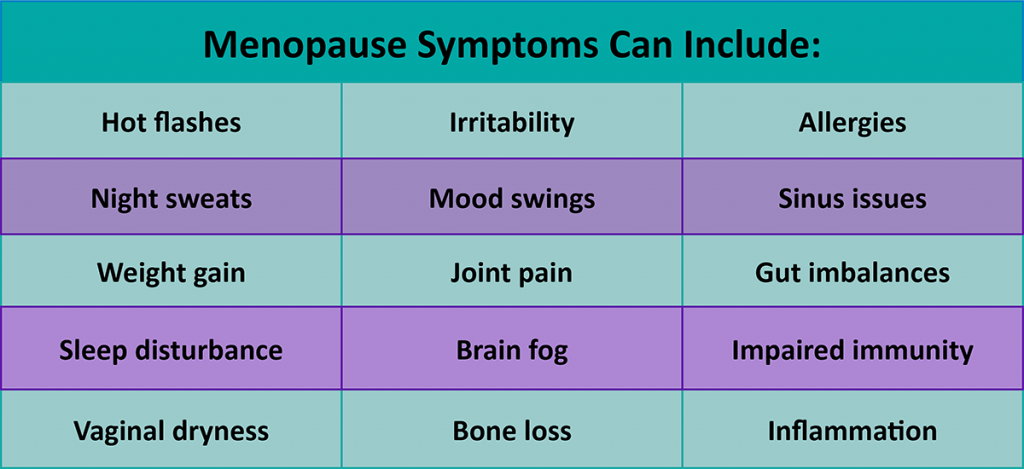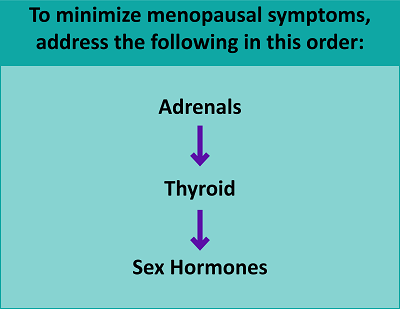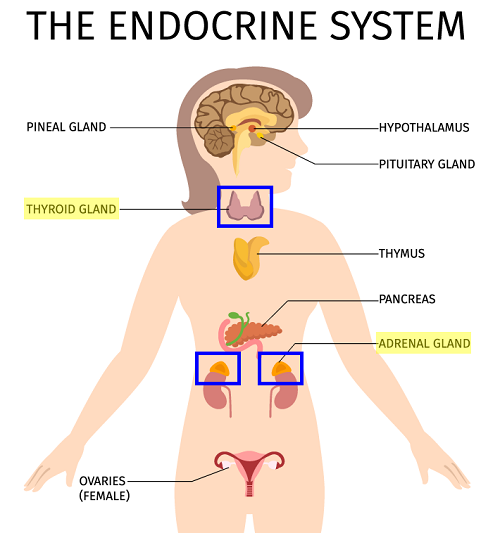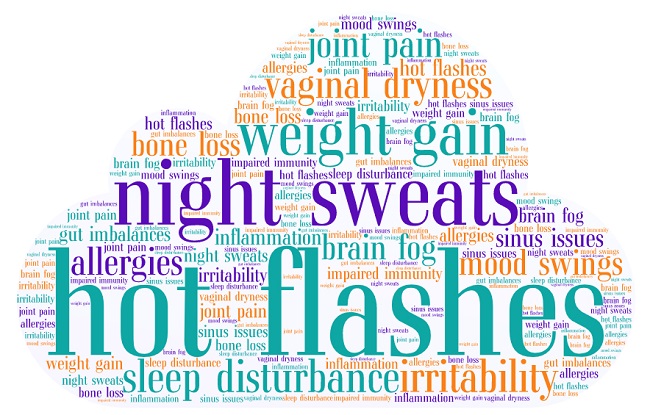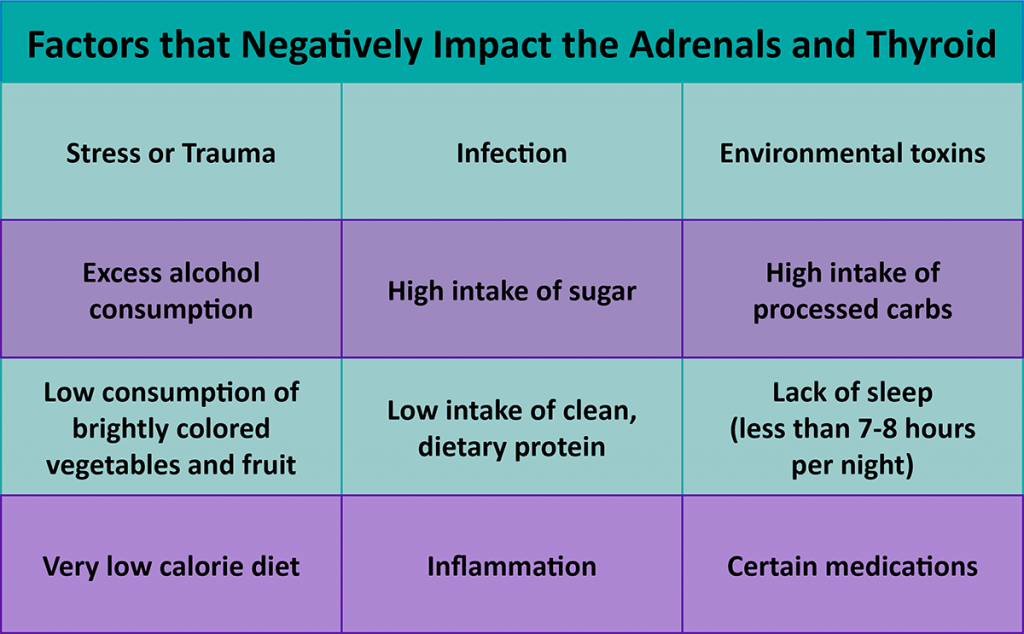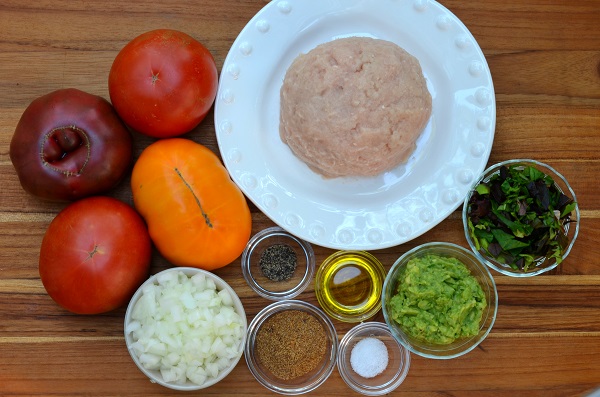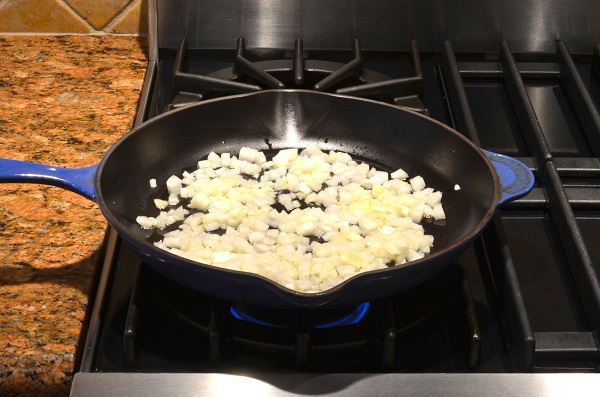It’s not unusual to hear women in their 50’s and 60’s discuss physical symptoms they’re experiencing associated with menopause.
In some cultures, however, many women do not experience menopause symptoms. In these cultures, the belief is when the body is in balance, menopausal symptoms do not exist.
At a recent Hormone Conference offered through the Institute for Functional Medicine, three ob/gyn practitioners confirmed this concept and shed some new light on how to return the 50+ woman’s body to a balanced state to avoid menopause symptoms.
These gyn docs were very clear that the best way to ease your body back into balance during and after menopause is to address the adrenal and thyroid glands. These glands are responsible for producing key hormones, including sex hormones (estrogen, progesterone, testosterone), that regulate our metabolic processes. If your adrenals and thyroid are out of balance, there will be a deficiency in sex hormones which will likely result in menopause symptoms. Once the adrenals and thyroid are balanced, menopause symptoms should subside.
About the Adrenals and Thyroid
So, how do we balance our adrenals and thyroid? First, it helps to know a little about the adrenal and thyroid glands and what they do. The adrenal and thyroid glands are part of the endocrine system of the body.
To alleviate #menopause symptoms, nurture your adrenal and thyroid glands #saslife Click To TweetAdrenal Glands
We have two small adrenal glands, one sitting on top of each kidney. Our adrenal glands produce hormones including stress hormones like epinephrine, norepinephrine and cortisol as well as sex hormones like progesterone, estrogen and testosterone. The adrenal glands also contribute to healthy blood pressure by producing the hormone aldosterone.
Supporting the adrenal glands with diet and lifestyle is critical for optimal production of sex hormones during menopause (and anytime) to avoid symptoms.
Thyroid Gland
The thyroid gland is at the base of the neck in front of the throat and is responsible for our metabolic functions including: breathing, heart rate, central nervous system functions, body weight, muscle strength, body temperature, cholesterol levels and much more. The thyroid gland is considered the body’s furnace. It uses iodine from the food we eat to make thyroid hormones, including T4 and T3. Every cell in our bodies relies on T4 and T3 to regulate its metabolism. So these thyroid hormones need to be maintained at optimal levels.
Certain dietary strategies and lifestyle habits are essential for optimal functioning of the thyroid gland to alleviate menopausal symptoms.
Background Info about Estrogen and Progesterone Production
During the female reproductive years, most of our estrogen and progesterone are produced by the ovaries and should be in adequate supply to carry out their numerous roles.
During menopause and beyond, however, the ovaries stop producing estrogen and progesterone. This leaves it up to the adrenal glands to make estrogen and progesterone from a hormone called Pregnenolone, the “Grandma Hormone”.
A problem for the modern day mature woman is that the adrenal glands don’t produce much Pregnenolone. Apparently, Nature originally planned that by age 50, women would be resting on chaise lounges eating Bon Bons with no stress in their lives (if they were fortunate enough to have lived this long). But, the reality is many contemporary 50+ women are in the peak of their high achieving careers, enjoying grandparenting, caring for aging parents and sometimes still raising their children. Anthropologically, the physiology of the modern 50+ woman’s body has not kept up with her adventurous and often stress-filled life.
Stress, Pregnenolone and the “Cortisol Steal”
To further complicate matters, in addition to being the precursor for estrogen and progesterone production, Pregnenolone is used to make cortisol, a primary stress hormone. When we are under periods of chronically high stress, large amounts of cortisol are produced which drains our Pregnenolone supply. This leaves less Pregnenolone to make into estrogen and progesterone putting us at risk for sex hormone imbalances. This phenomenon, called the “Cortisol Steal”, can contribute to menopause symptoms.
Bottom Line: To Alleviate Menopause Symptoms, Nurture Your Adrenal and Thyroid Glands.
The best way for a mature woman to minimize or eliminate menopausal symptoms is to implement diet and lifestyle strategies that keep the adrenal and thyroid glands balanced and functioning optimally.
Strategies to Positively Impact the Adrenals and Thyroid
To eliminate menopause symptoms, implement the following strategies that nurture the adrenal and thyroid glands. After each strategy, you will see the menopause symptoms that are alleviated by that strategy.
CLICK HERE for a printer-friendly checklist of these strategies!
- Eat a whole foods diet that is high in plant foods with clean proteins and healthy fats. Eliminate processed carbs and added sugars, reduce alcohol and caffeine.
ALL SYMPTOMS - Enjoy 8 – 10 brightly colored vegetables and 2 fruits daily. Eat the colors of the rainbow everyday – ROY G BIV. ALL SYMPTOMS
- Reduce alcohol consumption to 0 – 2 servings per week. FB, G, H, HF, HD
- Develop a daily meditation or Heart Rate Variability (HRV) Biofeedback practice to help balance your stress. Add additional stress management techniques to your toolbox. ALL SYMPTOMS
- Take a high quality multivitamin daily like this, this or this.The nutrients in these brands support the thyroid and adrenals. ALL SYMPTOMS
- Take a Vitamin D3 supplement daily if your serum vitamin D levels are low. Your quality multivitamin may contain adequate Vitamin D3. B, G, I, J, M
- Get 7 – 8 hours of quality sleep per night. ALL SYMPTOMS
- When eating animal proteins, choose grass fed pastured meats, poultry, eggs, butter and ghee. B,G, H, HD
- Move your body daily including strength training, weight bearing and balancing exercises. Practice yoga techniques daily. ALL SYMPTOMS
- Get pooping – have 1 – 2 bowel movements daily. This helps detoxify the body and remove bad estrogens and toxins that can be damaging to the thyroid, adrenals and the rest of your body. G,H, I, IN
- Consume 3 servings per week of low mercury, high omega-3 fatty acid fish like wild Alaskan salmon, sardines, and anchovies. Check with your nutritionist or health care provider to see if an omega-3 fatty acid supplement is appropriate for you. B, FB, HF, HD, IN, M, J
- Eat 3 – 5 magnesium rich foods daily. B, FB, G, HD, I, IN, J, M, S
- Drink 1 – 2 cups of green tea daily. B, FB, H, HD
- Eat ground flaxseeds regularly, 1 – 2 Tablespoons per serving. FB, G, H, HF, HD
- Use these powerful herbs and spices in cooking daily: Turmeric, Rosemary, Ginger, Cinnamon. FB, G, H, HD, I, IN, JA
- Eat legumes (beans, peas, lentils) daily if tolerated. Be sure to soak them first and discard soaking water. G, H, HD.
- Be good to your bones. Click here for info on bone support. B, HD
Sources: Institute for Functional Medicine, Hormone Module, July 2017.
Tomato Tacos
Adapted from Delish
Serves 4
Ingredients
4 medium or large tomatoes – include a variety of colors (if desired)
1½ Tbsp extra-virgin olive oil
1 medium sweet onion, chopped
1 lb ground chicken breast (or ground beef or bison) - preferably grass fed, pastured
2–4 Tbsp homemade taco seasoning mix – depending on your heat preference
Freshly ground black pepper
½ cup mixed greens or baby spinach
½ cup guacamole or fresh avocado
Directions
1. In a skillet over medium heat, heat oil. Add onion and cook until tender, about 5 minutes.
2. Add ground chicken and taco seasoning, breaking up the meat with a wooden spoon. Season with pepper, and cook until the meat is no longer pink, about 6 minutes. Drain fat if necessary and set aside.
3. Flip tomatoes so they are stem-side down. Cut the tomatoes into six wedges, being careful to not cut completely through the tomato. Carefully spread open the wedges.
4. Divide taco meat evenly among the tomatoes.
5. Top each with lettuce and guacamole.
6. Serve.

